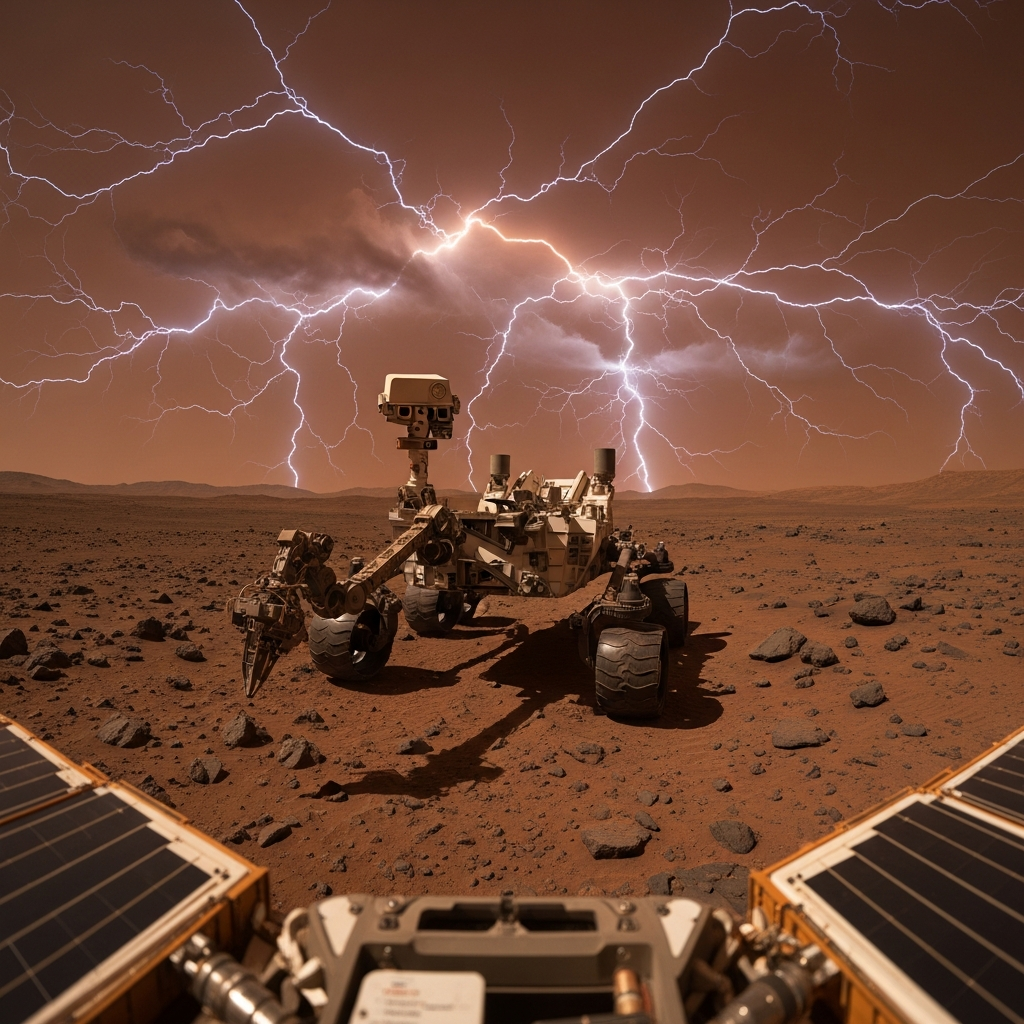Space is vast and often full of surprises, but few are as perplexing as a signal from the grave. Astronomers using a powerful radio telescope in Western Australia recently detected an incredibly strong, fleeting radio burst. The initial excitement about a potential discovery from deep space quickly turned to confusion. The source wasn’t billions of light-years away. It was a long-defunct NASA satellite that stopped working in 1967. This baffling event poses new questions about orbital debris and the future of astronomical observation.
A Cosmic Search Interrupted
The ASKAP radio telescope, an array of 36 dishes spread across Wajarri Yamaji Country, is designed to hunt for fast radio bursts (FRBs). These mysterious, millisecond-long flashes of energy originate from distant galaxies. Scientists believe some come from magnetars, incredibly dense remnants of dead stars with powerful magnetic fields. FRBs challenge our understanding of physics and help map the universe’s matter distribution. Discovering one near Earth would be groundbreaking, offering an unprecedented opportunity for detailed study.
In mid-June, researchers scanning data from ASKAP spotted a signal near our planet. It was so powerful that, for a brief moment, it was the brightest radio source in the entire sky. Initial reactions were thrilling. “We got all excited, thinking we had discovered an unknown object in the vicinity of the Earth,” said Clancy James, an associate professor at Curtin University. The signal shared key characteristics with FRBs: it was a one-off, transient radio pulse of immense brightness.
The Close-Up That Revealed the Truth
As the team analyzed the data, crucial differences emerged, pointing away from a distant cosmic source. Unlike signals from far-off galaxies, which travel across vast distances and interact with plasma, this signal showed almost no dispersion. Dispersion measure, a delay effect at lower radio frequencies, is a key indicator of distance for cosmic objects. Its absence here strongly suggested a source nearby.
Furthermore, the image produced by the telescope appeared blurry. This blur was a critical clue. It indicated the source was in the “near field” of the telescope array, meaning it was very close, within tens of thousands of kilometers. When a radio source is nearby, its wavefront is curved, unlike the flat wavefront from a distant object. This curvature causes a mismatch across the array’s antennas, resulting in a blurred image. By adjusting their analysis to account for this near-field effect, the astronomers could pinpoint the signal’s location with surprising accuracy.
The signal was traced to approximately 4,500 kilometers (about 2,800 miles) from Earth. Comparing this location with databases of orbiting objects yielded a precise match: the relay 2 satellite.
Relay 2: A Ghost in Orbit?
NASA launched Relay 2 in 1964. It was an experimental communications satellite, part of a pioneering program to relay signals between continents. Relay 1, its predecessor, helped broadcast the 1964 Tokyo Olympics. However, by 1967, Relay 2’s mission was complete, and its main instruments failed. The satellite became another piece of space junk, silently circling the Earth for nearly six decades.
Discovering a powerful radio emission from a satellite considered dead for close to 60 years was utterly unexpected. “We were all kind of disappointed at that,” James admitted, losing their potential cosmic discovery. But disappointment quickly shifted to scientific curiosity: How could a satellite long out of commission suddenly emit such a potent burst of energy?
The signal itself was extraordinarily brief. While the total event lasted about 30 nanoseconds (30 billionths of a second), the brightest part was just three nanoseconds, pushing the ASKAP instrument to its limit. Despite its brevity, the signal was estimated to be 2,000 to 3,000 times brighter than typical radio data the telescope collects, making it momentarily the most luminous radio source in the sky.
Unpacking the Mystery: Static or Space Dust?
Scientists have proposed two main theories to explain Relay 2’s sudden burst. Both involve events common in space but rarely linked to powerful, nanosecond-duration radio pulses from defunct objects.
Electrostatic Discharge (ESD)
The leading theory points to a buildup of static electricity on the satellite’s surface. Spacecraft in orbit are constantly bombarded by charged particles, leading to an accumulation of electrons, especially on non-conductive surfaces. This charging continues until the potential difference becomes so great that it finds a path to discharge, effectively short-circuiting a component on the satellite’s metal skin. This creates a sudden spark, much like the jolt you feel after walking across a carpet and touching a doorknob. Researchers believe this discharge could emit a radio wave pulse. While ESD is known to occur on spacecraft, theoretical models typically predict longer signal durations (tens of microseconds) than the observed nanosecond pulse from Relay 2. The Earth’s magnetosphere was also relatively quiet at the time, making typical charging less likely, adding another layer to the puzzle.
Micrometeorite Impact
A less likely, but still possible, explanation is the impact of a tiny piece of space debris – a micrometeorite. These particles, often smaller than a millimeter, travel at extreme velocities, sometimes exceeding 20 kilometers per second (over 45,000 mph). An impact at such speed can vaporize the micrometeorite and a small part of the satellite’s surface, creating a cloud of incredibly hot, dense plasma. This plasma could potentially emit a short burst of radio waves. However, like the ESD theory, models for plasma emission from impacts tend to predict slightly longer pulse durations than what was observed. The probability of a micrometeorite impact occurring precisely when ASKAP was observing Relay 2 is also estimated to be quite low, around 1%.
While both scenarios could theoretically produce radio emissions, neither perfectly matches the observed signal’s extremely short duration. The researchers slightly favor the ESD theory, noting that similar, though longer, signals have been detected from functioning satellites, like those in the GPS constellation, by instruments like the now-collapsed Arecibo telescope. However, they acknowledge the precise mechanism behind this nanosecond pulse remains an open question.
Implications for Astronomy and Space Operators
The Relay 2 incident carries significant implications for both astronomers and those managing satellites.
For astronomers, particularly those searching for FRBs and other transient cosmic events, the discovery highlights a potential source of confusion. While modern techniques, such as analyzing dispersion measure and attempting to identify host galaxies, allow scientists to confidently classify most detected FRBs as cosmic, a powerful, nearby pulse from a satellite could potentially mimic a galactic event. As Earth’s orbit becomes increasingly crowded with active and defunct satellites, distinguishing between signals of celestial and terrestrial origin will become more challenging for ground-based radio telescopes. This adds to the growing list of concerns posed by space junk and satellite constellations, which can interfere with optical and radio observations.
On the other hand, this event presents a novel opportunity for satellite operators. Electrostatic discharge is a known problem for spacecraft, capable of damaging sensitive electronics. However, monitoring these events directly is difficult. The Relay 2 detection suggests that ground-based radio telescopes, or perhaps simpler, purpose-built radio receivers, could potentially detect ESD events on satellites from afar. This remote monitoring capability could be invaluable for understanding how frequently ESD occurs on different types of satellites, how it correlates with space weather, and potentially developing better charge mitigation techniques for future spacecraft designs. Given that older satellites like Relay 2 may lack the advanced charge control systems found in modern spacecraft, studying these events could provide insights into the long-term behavior of aging orbital infrastructure.
Experts not involved in the study agree that the proposed mechanisms, particularly electrostatic discharge, are plausible. James Cordes, a professor of astronomy at Cornell University, described the analysis as “comprehensive and sensible,” noting that an impact could even trigger an electrostatic discharge. Ralph Spencer, Professor Emeritus of Radio Astronomy at the University of Manchester, also found the mechanism feasible, citing previous detections of spark discharges from GPS satellites. Both underscored the critical need for careful analysis to differentiate near-field, human-made radio pulses from genuine astronomical phenomena. The Relay 2 signal, while not a cosmic mystery, serves as a powerful reminder of the complex and sometimes unpredictable nature of Earth’s orbital environment and the challenges it poses to observing the distant universe.
Frequently Asked Questions
What exactly was the powerful signal detected from the dead satellite?
Astronomers detected an extremely powerful but very short radio pulse, lasting less than 30 nanoseconds, from NASA’s Relay 2 satellite. This satellite stopped functioning in 1967, making the emission unexpected. The signal was thousands of times brighter than typical radio sources the telescope usually observes, appearing as the brightest thing in the sky for a moment.
Why was this signal initially thought to be from deep space?
The signal shared some characteristics with fast radio bursts (FRBs), which are powerful, transient radio pulses originating from distant galaxies. Like some FRBs, it was a one-off event of immense brightness. However, analyzing its lack of dispersion measure and its ‘near-field’ effect (blurriness) quickly revealed it was very close to Earth, ruling out a distant cosmic source like an FRB.
How could a satellite that has been defunct for nearly 60 years suddenly emit a radio signal?
Scientists believe the signal was caused by an external event or internal process triggered externally, not the satellite’s original communication system. The two leading theories are an electrostatic discharge (a spark from static charge buildup on the satellite’s surface) or a micrometeorite impact (a tiny space rock creating a cloud of radio-emitting plasma upon collision). The exact mechanism producing such a short pulse is still being studied.
The Relay 2 incident underscores the dynamic nature of Earth’s orbit and the growing complexity of conducting astronomical research amidst increasing space traffic. It highlights the need for advanced techniques to distinguish cosmic signals from those originating from human-made objects. While the initial hope of a nearby cosmic discovery was dashed, the mystery of the dead satellite’s voice opens new avenues for understanding both orbital hazards and the potential for ground-based satellite monitoring. This unexpected burst serves as a potent reminder that even our oldest pieces of space junk can still offer scientific surprises.




